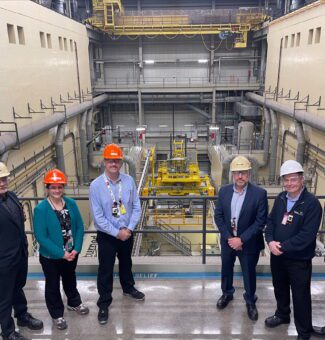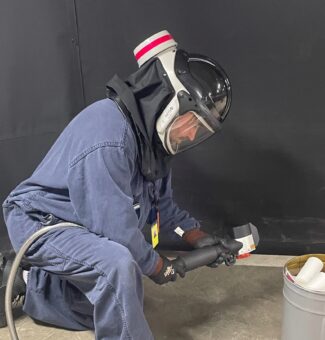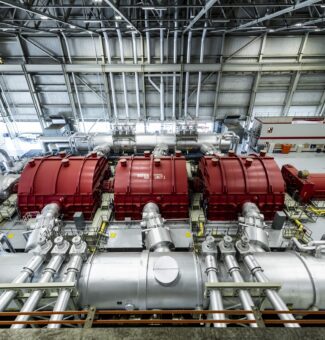Pickering Nuclear’s Cobalt-60 set to help in fight against COVID-19
At OPG’s Pickering Nuclear Generating Station, a team of skilled employees has finished carefully extracting Cobalt-60 from one of the station’s reactors, a practice that began almost 50 years ago.

With the 11-day Cobalt harvesting campaign having wrapped up on Oct. 29, the latest batch of the important medical isotope will soon be loaded into flasks and shipped for processing by Nordion, an Ottawa-based health sciences company. In short order, the isotopes will be used to sterilize medical devices, like swabs, syringes, and heart valves, providing a key line of defence for hospitals and care facilities around the world as they continue the fight against COVID-19.
Currently, about 50 per cent of the world’s Cobalt-60 is produced in Ontario’s CANDU reactors. OPG’s Pickering Nuclear provides 20 per cent of the world’s supply, making it one of the world’s leading sources of this important life-saving product.
First harnessed at the station in 1971, Cobalt-60 represents just one of several isotopes OPG is working to develop for innovative uses. Molybdenum-99 will soon be produced at Darlington Nuclear GS for medical imaging. The station will also soon produce a reliable and stable supply of Cobalt-60 isotopes to take over Pickering’s production when the station reaches its end of commercial operations.
“Millions of people in Ontario and around the world enjoy a healthier and safer quality of life because of the isotopes generated from our CANDU units,” said Ken Hartwick, OPG’s President and CEO. “OPG is proud to continue to lead this exciting work for the betterment of Ontarians, our economy and for people around the world.”
“Harvesting Cobalt is a technically advanced task requiring collaboration of several highly skilled individuals from mechanical maintenance, operations, and radiation protection.”Steve MacIsaac, Mechanical Front Line Manager at Pickering Nuclear
In the latest Cobalt-60 harvest, workers extracted adjuster rods teeming with the isotope from Pickering’s Unit 6 during a planned maintenance outage of the unit in October.
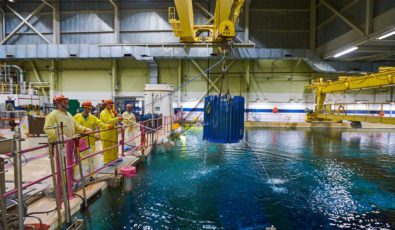
“Harvesting Cobalt is a technically advanced task requiring collaboration of several highly skilled individuals from mechanical maintenance, operations, and radiation protection,” said Steve MacIsaac, a Mechanical Front Line Manager at Pickering. “The team goes through rigorous training to choreograph each harvest.”
At the beginning of each production cycle, 21 adjuster rods made up of bundles of Cobalt-59 are placed into the reactor core of Pickering’s Unit 6, 7, or 8 during planned outages. These three units have been converted to use Cobalt adjuster rods for operations, rather than stainless steel rods.
Over the course of at least 24 months, the rods absorb neutrons in a process called irradiation and the Cobalt-59 changes at the atomic level to become Cobalt-60. During a unit outage, OPG employees remove the 21 adjuster rods and transfer them into the waters of the irradiated fuel bay, which resembles a swimming pool 12 metres deep.
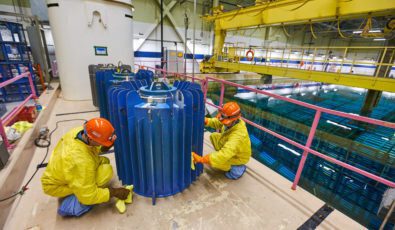
The Cobalt-60 adjuster rods are separated and then packaged in protective flasks before being delivered to Nordion, which processes the Cobalt-60 for medical or industrial use. The finished product is then shipped to medical facilities around the world.
Last November, OPG and Nordion announced an agreement to expand Cobalt-60 production to Darlington Nuclear, which will establish the station as a global leader in the supply of the isotope. The first harvest of Cobalt from Darlington is expected to take place during the first planned outage after the Darlington Refurbishment project wraps up in 2026.
In addition to their meticulous work at Pickering, the station’s Cobalt team has been working with Darlington to design its future Cobalt-60 program. The team has helped implement some of the Pickering tooling designs at Darlington, which will result in a 40 per cent reduction in time to harvest and cost efficiencies, as well as reduced radiation exposure to workers.
From the mine to hospitals: How Cobalt-60 is produced
- The Cobalt-60 life-cycle begins with the mining of Cobalt-59, a naturally-occurring non-radioactive material. The element is removed from the ground and processed into pure Cobalt-59 powder, which is then compressed into slugs.
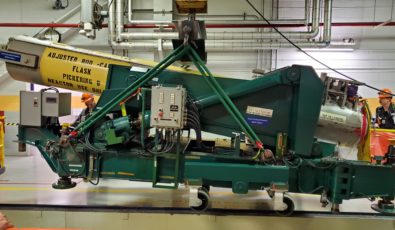
A flask positioner is maneuvered to extract a Cobalt-60 adjuster rod from the reactor at Pickering Nuclear GS. - These slugs are assembled into bundles to form Cobalt adjuster rods, which are then shipped to OPG’s Pickering Nuclear Generating Station.
- Here, the rods are inspected before being loaded into the reactor core of Pickering’s Unit 6, 7 or 8. During a planned maintenance outage of the unit, a total of 21 Cobalt adjuster rods are placed into the reactor core at a time.
- These three units have been converted to use Cobalt adjuster rods, rather than stainless steel rods, and Darlington Nuclear is in the process of converting as well. Adjuster rods serve a vital function and are part of the Reactor Regulating System.
- Over the course of at least 24 months, the rods absorb neutrons in a process called irradiation and the Cobalt-59 changes at the atomic level to become Cobalt-60.
- During a unit outage, harvesting of the mature 21 Cobalt-60 adjuster rods begins.
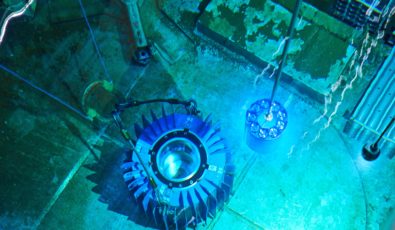
A bundle of Cobalt-60 isotopes are placed into a shipping flask in the spent fuel bay at Pickering Nuclear GS. - A specially designed protective flask enters the reactor building through the equipment airlock and is transferred by a crane onto the flask positioner, which is similar to a crane and runs on rails directly above the reactor.
- The flask positioner is then maneuvered to extract a mature Cobalt-60 rod. Each flask can only carry one irradiated adjustor rod at a time. The loaded flask is lifted by a crane and lowered onto a transporter to safely be driven from the reactor building to the irradiated fuel bay, which looks like a large swimming pool about 12 metres deep.
- Here, the flask is mounted to a special discharge port. Each cobalt adjuster rod is then removed from its flask and carefully lowered into the fuel bay through the port.
- Once submerged, the rod is transferred to a storage rack in the bay via a transfer arm and monorail trolley to await processing.
- Each rod is then inspected on a special processing table that rests at the bottom of the bay. While here, the rod is also separated into individual cobalt bundles by a bundle separator, a hydraulic system that uses tensile force to disassemble the adjuster rod.
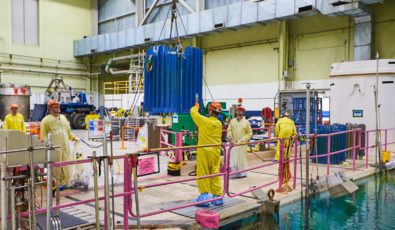
Workers prepare to clean a shipping flask loaded with Cobalt-60 bundles at Pickering Nuclear GS. - Once separated, the bundles are placed into vacant slots in the processing table. A reading is also taken to measure the radioactivity of each bundle.
- Finally, the Cobalt-60 bundles are loaded underwater into a F231 shipping flask, a purpose-built flask for transportation of Cobalt-60. The flask is then craned out of the bay and into a decontamination room, where it is dried and purged with argon gas.
- Now ready for shipping, the prepared flasks are loaded onto a trailer and delivered to the processing facility of Nordion, an Ottawa-based health sciences company. Here, the Cobalt-60 is processed for industrial or medical use and shipped to the customer.
Subscribe and stay informed
Sign up to receive the latest news, project updates, and event information from OPG.
